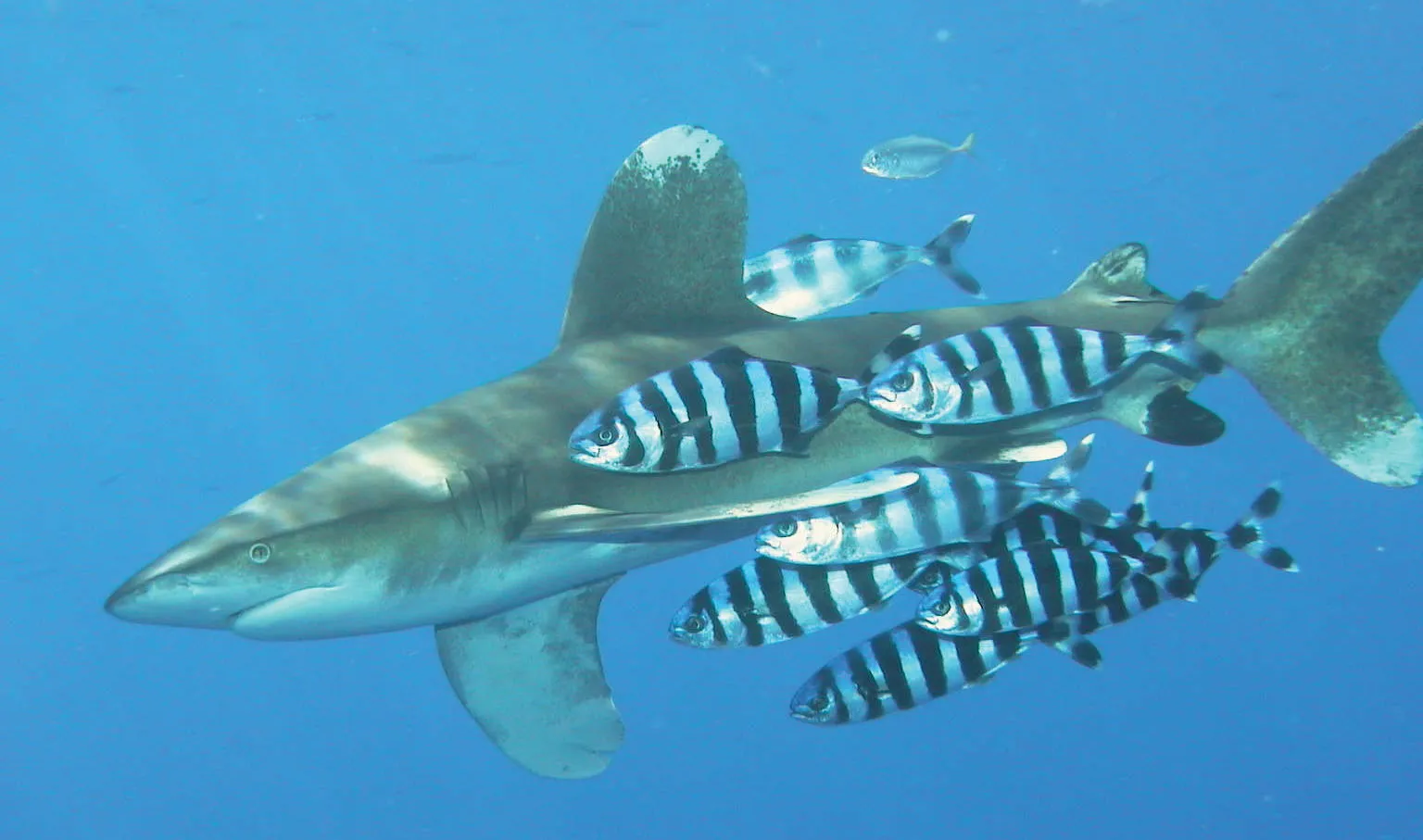
Commensalism is a fascinating ecological interaction where one organism benefits while the other is unaffected. It is a unique, and often overlooked, relationship in the natural world. In commensalism, the “commensal” organism benefits without harming or benefiting the “host” organism. This interaction can occur between organisms of different species or even different kingdoms, showcasing the intricate web of connections that exist in ecosystems.
In this article, we will delve into the intriguing world of commensalism and explore 11 astonishing facts that will leave you in awe of the complexity and diversity of these relationships. From tiny organisms that find shelter on larger hosts, to creatures that rely on the leftovers from other organisms’ meals, commensalism offers a multitude of captivating examples. So, let’s embark on this journey and discover the hidden wonders of commensalism!
Key Takeaways:
- Commensalism is a unique ecological relationship where one organism benefits without harming the other. It can be found in both plants and animals, and even in the human body, showcasing its diverse nature.
- Studying commensalism helps scientists understand how different species interact and evolve, contributing to the overall biodiversity and stability of ecosystems. It’s like uncovering the secret language of nature!
Commensalism is a type of ecological relationship.
In commensalism, one organism benefits while the other is neither harmed nor benefited. It is a form of symbiosis, where two organisms interact and live in close proximity to each other.
There are different types of commensalism.
Commensalism can occur in various forms, such as phoresy, inquilinism, and metabiosis. Each type involves different interactions and benefits between the organisms involved.
Plants and animals can exhibit commensal relationships.
Commensalism is not limited to a specific group of organisms. It can be observed in both the plant and animal kingdoms. For example, epiphytic plants that grow on trees without harming them demonstrate commensalism.
Commensalism can provide protection and transportation.
In some cases, the commensal organism uses the host as a means of protection or transportation. For instance, certain animals may hitch a ride on larger animals to access new food sources or avoid predators.
Commensalism can occur between species of different sizes.
Unlike other ecological relationships, commensalism can be established between organisms of different sizes. One organism may provide a benefit to the other without being affected by its presence.
Examples of commensalism can be found in the ocean.
The vast oceanic ecosystem is home to numerous examples of commensalism. Remoras attaching themselves to larger marine creatures, such as sharks, to scavenge on leftover food is one such example.
Commensalism plays a significant role in creating biodiversity.
By allowing organisms to coexist and establish unique relationships, commensalism contributes to the overall biodiversity of an ecosystem. It enhances the stability and resilience of the ecosystem as a whole.
Commensal organisms may adapt to live exclusively with their host.
In some instances, commensal organisms become so adapted to their host that they cannot survive without them. This dependency further strengthens their relationship and reliance on each other.
Commensalism can be observed in the human microbiome.
The human body provides an ideal habitat for a diverse range of microorganisms. Many of these microorganisms have commensal relationships with the human host, benefiting from the nutrients and environment provided.
Commensalism can have evolutionary implications.
Over time, commensal relationships can influence the evolution of both the host and commensal organisms. They can drive adaptations and coevolution, leading to changes in behavior, morphology, or physiology.
Commensalism research is crucial for understanding ecological dynamics.
Studying commensalism provides insights into the complex interactions and dynamics within an ecosystem. It helps scientists better understand the interconnectedness of species and the overall functioning of ecosystems.
Conclusion
Commensalism is a fascinating ecological relationship that highlights the interconnectedness of species in the natural world. Through this mutually beneficial interaction, one species benefits while the other remains unaffected. The astonishing facts about commensalism shed light on the intricate dynamics and adaptations that have evolved between organisms.
From the hitchhiking behavior of remoras to the camouflage techniques of leafhoppers, commensalism showcases the diverse strategies employed by organisms to thrive in their environment. Understanding these relationships not only deepens our appreciation for the complexity of nature but also emphasizes the delicate balance that exists within ecosystems.
Furthermore, the study of commensalism provides valuable insights into ecological research, with implications for both conservation and evolutionary biology. By unraveling the intricacies of these interactions, scientists can gain a better understanding of the natural world and potentially develop strategies to mitigate human impacts on delicate ecosystems.
In essence, commensalism is a reminder that cooperation and interdependence are not limited to human societies but can be found in the remarkable relationships forged between different species. Nature’s capacity for astonishing partnerships serves as a powerful reminder of the wonders that await us as we continue to explore and unravel the secrets of the natural world.
FAQs
1. What is commensalism?
Commensalism is an ecological relationship between two organisms where one species benefits while the other remains unaffected. This interaction is characterized by one species, known as the commensal, gaining an advantage, such as shelter or transportation, without causing harm or benefit to the other species.
2. How does commensalism differ from other ecological relationships?
Compared to other ecological relationships like mutualism and parasitism, commensalism stands out because only one species benefits while the other remains neutral. In mutualism, both species benefit, while in parasitism, one species benefits at the expense of the other.
3. What are some examples of commensalism in nature?
Examples of commensalism include remoras hitchhiking on sharks and gaining access to leftover prey, orchids growing on tree branches to reach sunlight, and barnacles attaching themselves to the body of whales for transportation and access to food.
4. How does commensalism contribute to ecosystem balance?
Commensalism plays a vital role in maintaining ecosystem balance by facilitating the transfer of resources and providing ecological niches for various species. By allowing one species to utilize resources without causing harm, commensalism promotes biodiversity and stability within ecosystems.
5. Can commensalism have any negative impacts?
In certain scenarios, commensalism can potentially lead to negative impacts for the host species if the commensal organism becomes too abundant or starts causing harm. However, the majority of commensal relationships do not result in detrimental consequences for either species involved.
Commensalism fascinates scientists and nature enthusiasts alike. This unique ecological relationship showcases the intricate connections between species in our world. If you're curious to learn more about how different organisms interact, consider exploring the world of fashion with Commense Clothing. Their stylish designs draw inspiration from the beauty of nature. For those intrigued by the marvels of the human body, "13 Unbelievable Facts About Immune Tolerance" offers a captivating look at how our immune systems maintain balance and prevent autoimmune disorders. Dive deeper into the wonders of biology and expand your knowledge of the natural world.
Was this page helpful?
Our commitment to delivering trustworthy and engaging content is at the heart of what we do. Each fact on our site is contributed by real users like you, bringing a wealth of diverse insights and information. To ensure the highest standards of accuracy and reliability, our dedicated editors meticulously review each submission. This process guarantees that the facts we share are not only fascinating but also credible. Trust in our commitment to quality and authenticity as you explore and learn with us.


